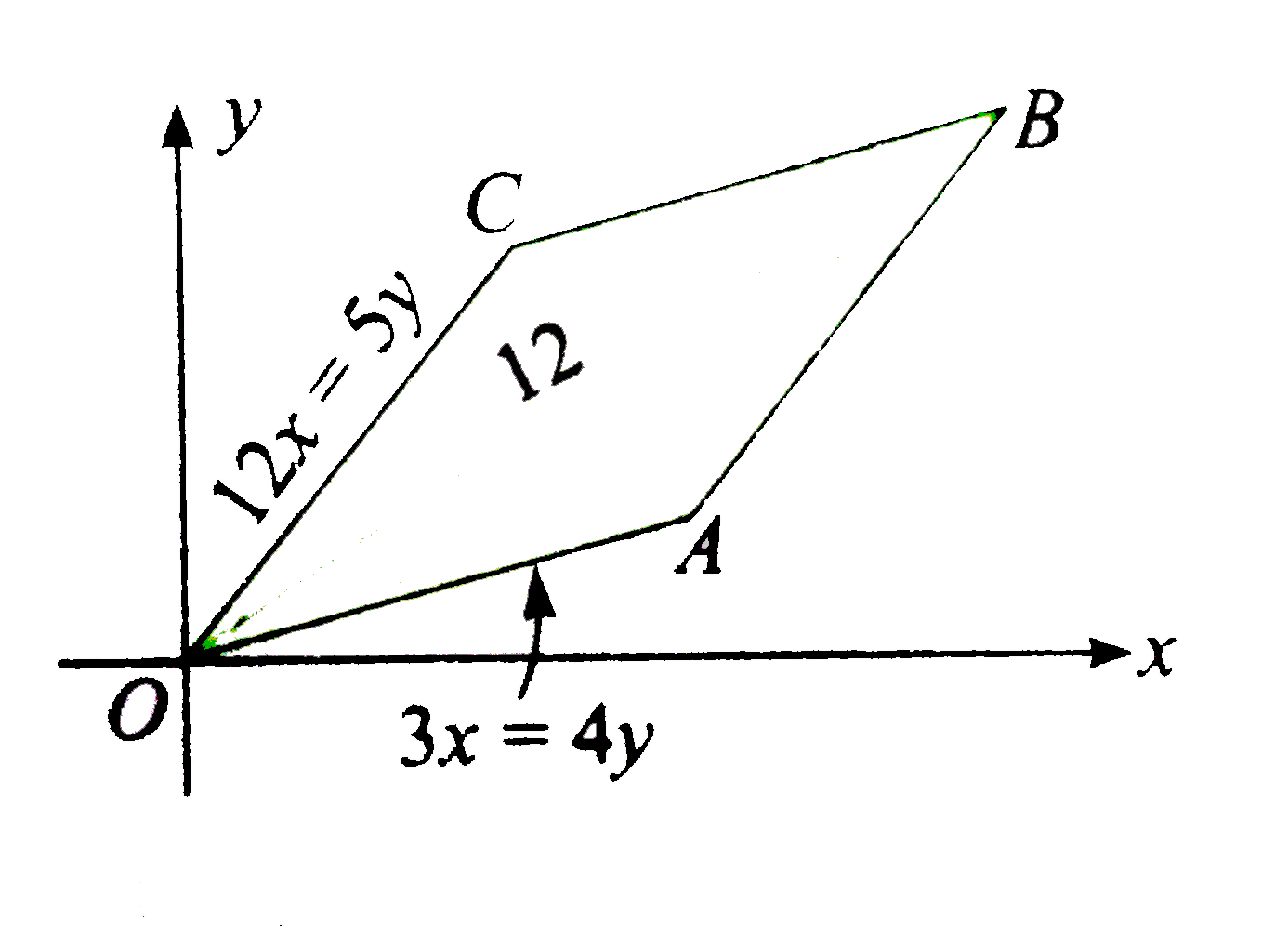Two sides of a rhombus lying in the first quadrant are given by 3x−4y=0and12x−5y=0 . If the length of the longer diagonal is 12, then find the equations of the other two sides of the rhombus.

OB is along the acute angle bisector of the given lines: 3x-4y=0 and 12x-5y =0.
The equation of acute angle bisector is
3x−4y5=−12−5y13
or 9x-7y=0
∴Slope of OB=tanθ=97
Now, OB= 12.
Therefore, the coordinates of B are
(12cosθ,12sinθ)≡(127√130,129√130)≡(84√130,108√130)
AB is passing through B and is parallel to OC.
Therefore, the equation of AB is
y−108√130=125(x−84√130)
BC is passing through B and is parallel to OA.
Therefore, the equation of BC is y−108√130=34(x−84√130)
Topper's Solved these Questions
- BOOK - CENGAGE ENGLISHCHAPTER - STRAIGHT LINESEXERCISE - EXAMPLE12videos
STRAIGHT LINES
- BOOK - CENGAGE ENGLISHCHAPTER - STRAIGHT LINESEXERCISE - CONCEPT APPLICATION EXERCISE 2.123videos
STRAIGHT LINES
- BOOK - CENGAGE ENGLISHCHAPTER - STRAIGHT LINEEXERCISE - Multiple Correct Answers Type8videos
STRAIGHT LINE
- BOOK - CENGAGE ENGLISHCHAPTER - THEORY OF EQUATIONSEXERCISE - JEE ADVANCED (Numerical Value Type )1videos
THEORY OF EQUATIONS
Similar Questions
Two sides of a rhombus lying in the first quadrant are given by 3x−4y=0 and 12x−5y=0. If the length of the longer diagonal is 12, then find the equations of the other two sides of the rhombus.
View SolutionTwo consecutive sides of a parallelogram are 4x+5y=0 and 7x+2y=0 . If the equation of one diagonal is 11x+7y=9, find the equation of the other diagonal.
View SolutionTwo consecutive sides of a parallelogram are 4x+5y=0 and 7x+2y=0 . If the equation of one diagonal is 11x=7y=9, find the equation of the other diagonal.
View SolutionThe combined equation of two adjacent sides of a rhombus formed in first quadrant is 7x2−8xy+y2=0 then slope of its longer diagonal is
View SolutionThe combined equation of two adjacent sides of a rhombus formed in first quadrant is 7x2−8xy+y2=0 then slope of its longer diagonal is
View SolutionTwo sides of an isosceles triangle are given by the equations 7x−y+3=0andx+y−3=0 and its third side passes through the point (1,−10). Determine the equation of the third side.
View SolutionTwo equal sides of an isosceles triangle are given by 7x−y+3=0 and x+y=3, and its third side passes through the point (1,−10). Find the equation of the third side.
View Solutionabout to only mathematics
View SolutionTwo equal sides of an isosceles triangle are 7x-y+3=0 and x+y-3=0. Its third side passes the point (1,-10).
Determine the equation of the third side.View SolutionThe equations of two sides of a triangle are 3x−2y+6=0 and 4x+5y−20 and the orthocentre is (1,1). Find the equation of the third side.
View Solution

